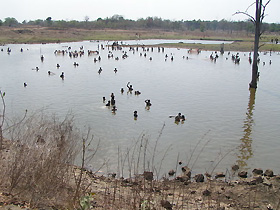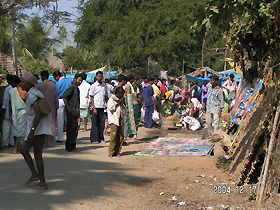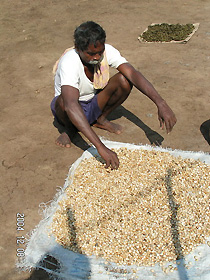(3) In my pre-doctorial thesis, I described how agriculture in the study village has changed from low-input subsistence to high-input commercial farming. During this trip, I focused in particular on some issues concerning the high production costs of chili cultivation. As presently the tendency toward high-input commercial cropping is becoming more and more intense, the villagers have become increasingly aware of problems associated with this method of cultivation. The following is the information acquired during this trip. The cost for insect pest control (especially thrips) amounts to 20% of total production costs, and most villagers have to borrow the money. If the selling price of the chili harvest drops – this year it actually dropped by 30% over the previous year — the villagers end up falling into debt. In addition to the costs, the pesticides often cause nausea or rashes when villagers have sprayed and been exposed to them. Among the villagers who sprayed pesticides this year, 18% had to receive injections because of intolerable nausea or rashes. However, no other pest control method has been introduced or examined. Recently, some local NGOs have begun planning to introduce some alternative methods, using alternative pesticides made from locally available materials instead of chemical pesticides. Fortunately, the villagers have a great deal of knowledge about local valuable plants, e.g., they know that a form of pesticide can be made from the fruits of Strychnos spp., a kind of non-timber forest product. In fact, some landless farmers gather and sell its fruits to governmental traders. Since chili harvesting requires great labor power, the chili cultivators in the village experience labor shortages. To cope with this, in the harvest season, many seasonal laborers come or migrate in not only from neighboring villages but also from beyond the State border. They could be included in the low-cost agriculture that is being proposed, if they can gather some valuable plants and process them to sell as alternative pesticides. |



 21st Century COE Program
-Aiming for COE of Integrated Area Studies-
21st Century COE Program
-Aiming for COE of Integrated Area Studies-